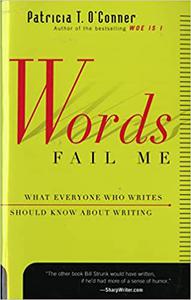
Patricia T. O'Conner, "Words Fail Me: What Everyone Who Writes Should Know about Writing"
English | ISBN: 0156010879 | 2000 | 240 pages | EPUB | 156 KB
From a bestselling author on grammar, Patricia O'Connor's guide to grammar fundamentals is "sympathetic to the struggling writer and often just plain funny." (The Seattle Times)
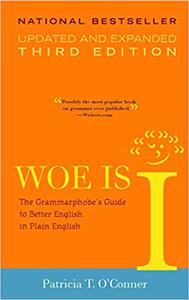
Patricia T. O'Conner, "Woe is I: The Grammarphobe's Guide to Better English in Plain English, 3rd Edition Ed 3"
English | ISBN: 157322331X | 2010 | 288 pages | EPUB | 283 KB
"Former New York Times Book Review editor and linguistic expert O'Conner...updates her bestselling guide to grammar, an invigorating and entertaining dissection of our ever-evolving language." - Publishers Weekly
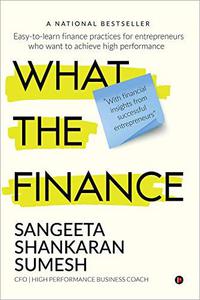
What the Finance: Easy-to-Learn Finance Practices for Entrepreneurs Who Want to Achieve High Performance by Sangeeta Shankaran Sumesh
English | April 11, 2019 | ISBN: 1645467961 | True EPUB | 256 pages | 4.8 MB
No. Finance is not confusing. Finance is not boring. Finance is definitely not something you can ignore.

Victim of Her Own Emotions: An Erotic Thriller Affair by Natalia Diaz
English | May 1, 2020 | ISBN: N/A | ASIN: B087ZM48WX | 180 pages | EPUB | 0.38 Mb
Lorrie, a middle aged wife meets her husbands supervisor at a company function. She is taken over by his looks and confidence. Jake is also deeply drawn into her. Lorrie is in a predicament as to whether if to compromise her happy married life and succumb to her instincts and Jake's advances or to maintain fidelity to her husband. This story is about her decisions and the consequences she faces thereafter. This erotic thriller is written specifically to excite and entertain you. Start reading now.
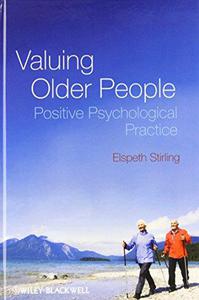
Valuing Older People: Positive Psychological Practice By Elspeth Stirling(auth.)
2010 | 215 Pages | ISBN: 047068335X | PDF | 3 MB
This book examines the growing importance of positive psychologyand its connection to later life. Applies Social Role Valorisation (SVR) principles to care of older people,particularly thosewith seriously disabling conditions such as dementia, stroke, and multiple health problems Provides a comprehensive body of positive principles and practical approaches for those whocare for older people Examines the impact of the devaluation of older people's lives in the context of societies dependenton technology Demonstrateshow more age-inclusive societies and open awareness of later-life issues are fundamental to strong communities, as well as to personal happiness and resilience Content: Chapter 1 The Psychology and Ecology of Ageing (pages 1-16): Chapter 2 Preventive Psychology in Later Life (pages 17-46): Chapter 3 Assessment in the New Paradigm (pages 47-57): Chapter 4 New Paradigm Principles for Intervention (pages 59-85): Chapter 5 Older People with Cognitive Disabilities (pages 87-134): Chapter 6 New Paradigm Principles of Service Design (pages 135-153): Chapter 7 Psychological Therapies with Older People (pages 155-187):
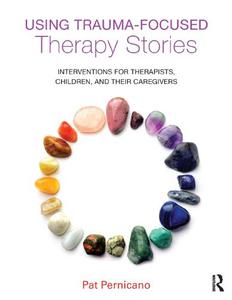
Pat Pernicano, "Using Trauma-Focused Therapy Stories: Interventions for Therapists, Children, and Their Caregivers"
English | 2014 | pages: 273 | ISBN: 0415726921 | PDF | 1,4 mb
Using Trauma-Focused Therapy Stories is a groundbreaking treatment resource for trauma-informed therapists who work with abused and neglected children ages nine years and older as well as their caregivers. The therapy stories are perfect accompaniments to evidence-based treatment approaches and provide the foundation for psychoeducation and intervention with the older elementary-aged child or early pre-teen. Therapists will also benefit from the inclusion of thorough guides for children and caregivers, which illustrate trauma and developmental concepts in easy-to-understand terms. The psychoeducational material in the guides, written at a third- to fourth-grade reading level, may be used within any trauma-informed therapy model in the therapy office or sent-home for follow-up. Each therapy story illustrates trauma concepts, guides trauma narrative and cognitive restructuring work, and illuminates caregiver blind spots; the caregiver stories target issues that often become barriers to family trauma recovery. No therapist who works with young trauma survivors will want to be without this book, and school-based professionals, social workers, psychologists and others committed to working with traumatized children will find the book chock-full of game-changing ideas for their practice.
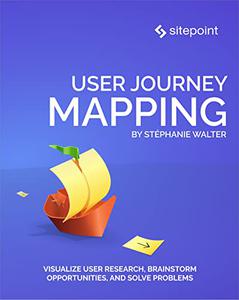
User Journey Mapping: Visualize User Research, Brainstorm Opportunities, and Solve Problems by Stéphanie Walter
English | February 25, 2022 | ISBN: 1925836495, ASIN: B09TN3FNK8 | True PDF | 66 pages | 8.9 MB
A user journey map is a powerful asset that's used to understand how people use our products. It is an essential tool for building websites, applications, and services. By visualizing user goals, phases in the journey, tasks, pain points, and sometimes feelings, a map can help teams build products by showing a global view of the user's journey, bringing stakeholders and product teams together. It can be used to brainstorm new opportunities, fix issues, design new services, and understand gaps within an organization.
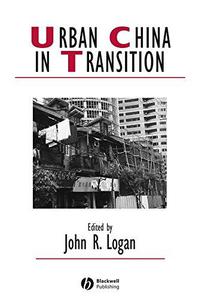
Urban China in Transition By
2007 | 369 Pages | ISBN: 1405161450 | PDF | 6 MB
Using an innovative approach, this book interprets the unprecedented transformation of contemporary China's major cities. It deals with a diversity of trends and analyzes their sources. Offers a multi-dimensional analysis of urban life in China Highlights a diversity of trends in the areas of migration, criminal victimization, gated communities, and the status of women, suburbanization, and neighbourhood associations Each chapter includes input from both an expert on urban life in China and an 'outside' expert from the fields of sociology, geography, economics, planning, political science, history, demography, architecture, or anthropology An alternative theoretical perspective comparing the Chinese experience with other urban settings in the United States, Poland, Russia, Vietnam, East and South East Asia, and South America Content: Chapter 1 Two Decades of Reform: The Changing Organization Dynamics of Chinese Industrial Firms (pages 27-47): Shahid Yusuf and Kaoru NabeshimaChapter 2 The Myth of the "New Urban Poverty"? Trends in Urban Poverty in China, 1988-2002 (pages 48-65): Simon Appleton and Lina SongChapter 3 Class Structure and Class Inequality in Urban China and Russia: Effects of Institutional Change or Economic Performance? (pages 66-88): Yanjie Bian and Theodore P GerberChapter 4 Gender and the Labor Market in China and Poland (pages 89-111): C. Cindy Fan and Joanna RegulskaChapter 5 Urbanization, Institutional Change, and Sociospatial Inequality in China, 1990-2001 (pages 115-139): Michael J. White, Fulong Wu and Yiu Por (Vincent) ChenChapter 6 Growth on the Edge: The New Chinese Metropolis (pages 140-160): Yixing Zhou and John R. LoganChapter 7 Mirrored Reflections: Place Identity Formation in Taipei and Shanghai (pages 161-181): Jennifer Rudolph and Hanchao LuChapter 8 Is Gating Always Exclusionary? A Comparative Analysis of Gated Communities in American and Chinese Cities (pages 182-202): Youqin Huang and Setha M. LowChapter 9 Urbanization in China in the 1990s: Patterns and Regional Variations (pages 205-225): Zai Liang, Hy Van Luong and Yiu Por (Vincent) ChenChapter 10 Trapped in Neglected Corners of a Booming Metropolis: Residential Patterns and Marginalization of Migrant Workers in Guangzhou (pages 226-249): Min Zhou and Guoxuan CaiChapter 11 Migration and Housing: Comparing China with the United States (pages 250-267): Weiping Wu and Emily RosenbaumChapter 12 Economic Reform and Crime in Contemporary Urban China: Paradoxes of a Planned Transition (pages 271-293): Steven F. Messner, Jianhong Liu and Susanne KarstedtChapter 13 Migration, Urbanization, and the Spread of Sexually Transmitted Diseases: Empirical and Theoretical Observations in China and Indonesia (pages 294-341): Christopher J. Smith and Graeme HugoChapter 14 The State's Evolving Relationship with Urban Society: China's Neighborhood Organizations in Comparative Perspective (pages 315-335): Benjamin L. Read and Chun?Ming Chen

Unlock Bible Meaning with 13 Keys to Master How To Defeat All Your Demons: Translations Don't Do Justice To The Original Language Resulting in Confusion. This Study Method Reveals Clarity by Sobia Publication
English | 2022 | ISBN: N/A | ASIN: B0B4BLKY1Z | 65 pages | MOBI | 0.19 Mb
What struggle do you have today?
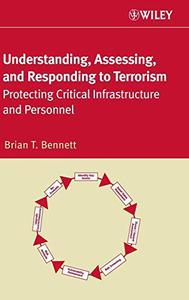
Understanding, Assessing, and Responding to Terrorism: Protecting Critical Infrastructure and Personnel By Brian T. Bennett(auth.)
2007 | 474 Pages | ISBN: 047177152X | PDF | 5 MB
Preparedness is the best weapon against terrorismUnderstanding, Assessing, and Responding to Terrorism: Protecting Critical Infrastructure and Personnel gives a detailed explanation of how to implement preventive and/or protective measures to ensure the safety of personnel and facilities. It includes: Easily customized templates for the vulnerability analysis, security procedures, emergency response procedures, and training programs Vulnerability assessment methodologies and formulas for prioritizing targets Coverage of critical infrastructure sectors, hard targets, and soft targets, such as hotels, places of worship, and commercial districts Countermeasures for terrorist attacks using weapons of mass destruction with coverage of chemical, biological, radiological/nuclear, and explosive materials A seven-step Security Vulnerability Analysis (SVA) process to identify and categorize critical infrastructure, key resources, and key assets Information on the National Incident Management System (NIMS) that enables all public, private, and non-governmental organizations to work together effectively to prepare for, prevent, respond to, and recover from domestic incidents Numerous case studies and examples A practical, how-to book with step-by-step processes to help reduce risks from terrorist attacks, this is a must-have reference for private and public sector risk managers, safety engineers, security professionals, facility managers, emergency responders, and others charged with protecting facilities and personnel.Content: Chapter 1 The Terrorist Threat (pages 1-50): Chapter 2 Critical Infrastructure (pages 51-121): Chapter 3 Types of Terrorist Attacks (pages 123-141): Chapter 4 Weapons of Mass Destruction (pages 143-191): Chapter 5 The Terrorist's Preparation for an Attack (pages 193-213): Chapter 6 Risk and Threat Assessment (pages 215-254): Chapter 7 Protecting Critical Infrastructure, Key Resources, and Key Assets (pages 255-287): Chapter 8 Principles of Protective Security (pages 289-310): Chapter 9 Effective Security Countermeasures (pages 311-366): Chapter 10 General Emergency Response Considerations (pages 367-424): Chapter 11 Emergency Response to a Weapon of Mass Destruction Attack (pages 425-460):


